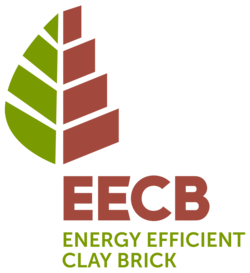Physics:Energy efficient clay brick project
Funded by the Swiss Agency for Development and Cooperation’s (SDC) Global Programme Climate Change, and implemented by Swisscontact, the Energy Efficient Clay Brick project (EECB) aims at increasing energy efficiency and reducing greenhouse gas emission in the South African clay brick sector. The project represents phase II of the 4 year Vertical Shaft Brick Kiln (VSBK) project and was launched in November 2013 with a duration of another 4 years.
About the Project
The Swiss Agency for Development and Cooperation (SDC) funded “Energy Efficient Clay Brick (EECB)” Project aims to foster sustained and broad-based Energy Efficiency (EnE) in the Clay Brick Sector, by targeting the entire market system. Based on this market system approach, the EECB Project – which has evolved from and forms the second phase of the Vertical Shaft Brick Kiln Project (2009 – 2013) – invests in a diverse set of stakeholders within the Clay Brick Sector of South Africa , by supporting and capacitating clay brick makers and industry service providers in adopting a systematic approach to energy management. The Project not only contributes to technology transfer, but also addresses sector constraints within the enabling environment as well as the demand levels of the clay brick market system.
Project Objectives
The overall objective of the EECB Project [1] is to facilitate EnE within the Clay Brick Sector, reducing CO2 emissions and thereby contributing towards the country’s overall targets in increasing EnE and lowering carbon emissions. By October 2017, the EECB Project expects to reach 50 producers who reduce their CO2 emissions by 320,000 tCO2 annually and reach a 10 percent reduction in overall input energy.
On the supply side, the project engages actively with clay brick producers and related service providers, equipping them with the necessary capacity and knowledge needed to shift to more energy efficient production practices including the Vertical Shaft Brick Kiln (VSBK) and Habla Zig Zag Kiln (HZZK) [2] technologies. With regards to a more enabling environment, EECB facilitates a close cooperation between private and public stakeholders and facilitates the access to specific financial products and funding schemes.
On the demand side of the bricks sub-sector, the project promotes the use of energy efficient clay brick among the building sector in an effort to grow market share and create a pull effect for the main drivers of change - the buyers.
Achievements
Since its implementation in November 2013, the EECB has gained recognition amongst the South African Clay Brick Sector through its close partnership with the South African Clay Brick Association [3] (CBA) as well as the Energy Efficiency Sector.
Notable Successes
- The successful transfer of the VSBK technology to the South African Clay Brick Makers
- total reduction of 7.200tCO2 per year by mid 2015 since 2013
- Completed construction of 24 VSBK shafts and an additional 22 shafts to be constructed in 2016
- 88% of brick makers have sought out energy efficient measures since the projects inception
- An increasing number of brick makers are conducting energy audits
- Establishment of the Clay Brick Sector Energy Guidelines and Best Practices with the assistance of Carbon Trust
Reference Page
References


